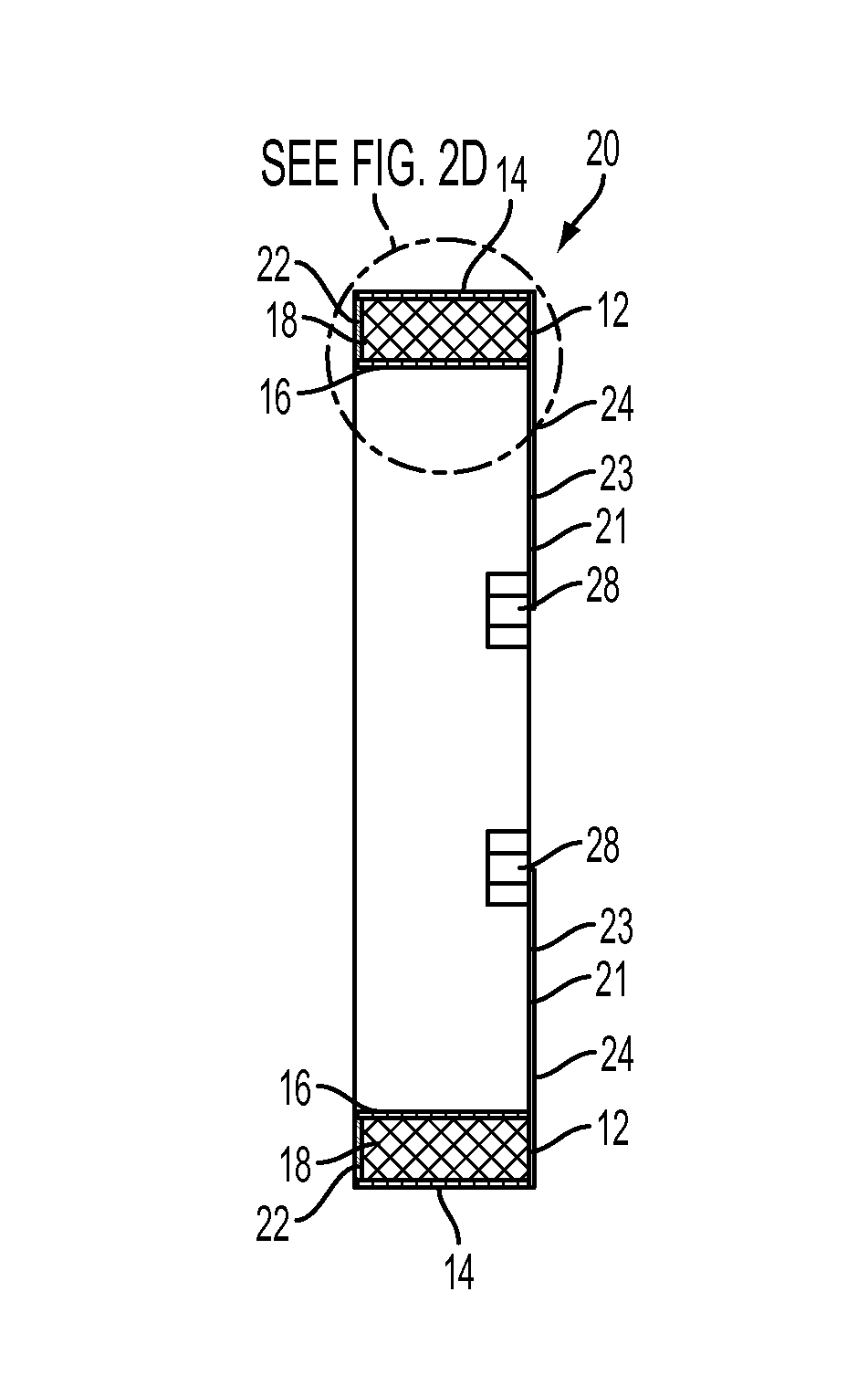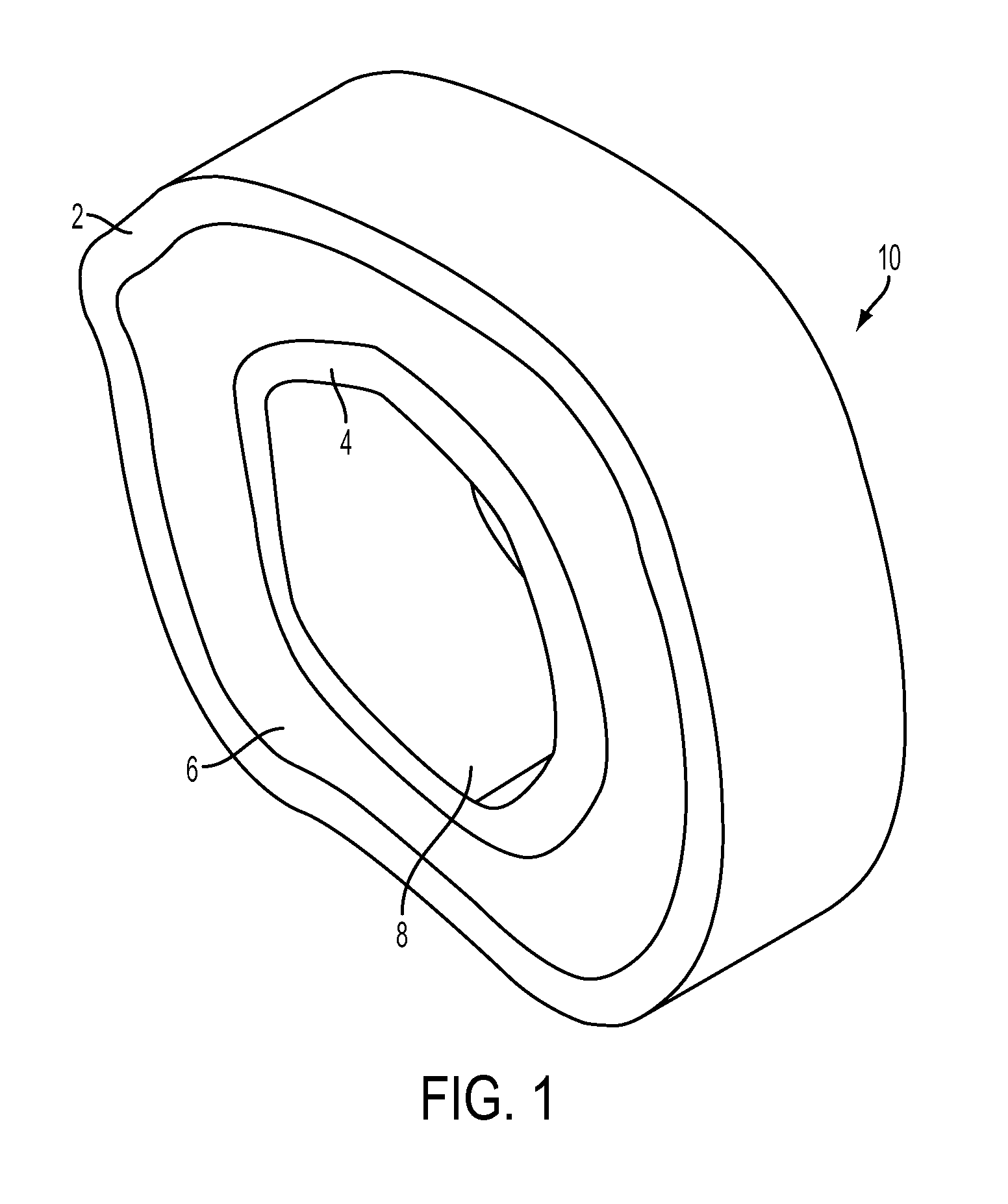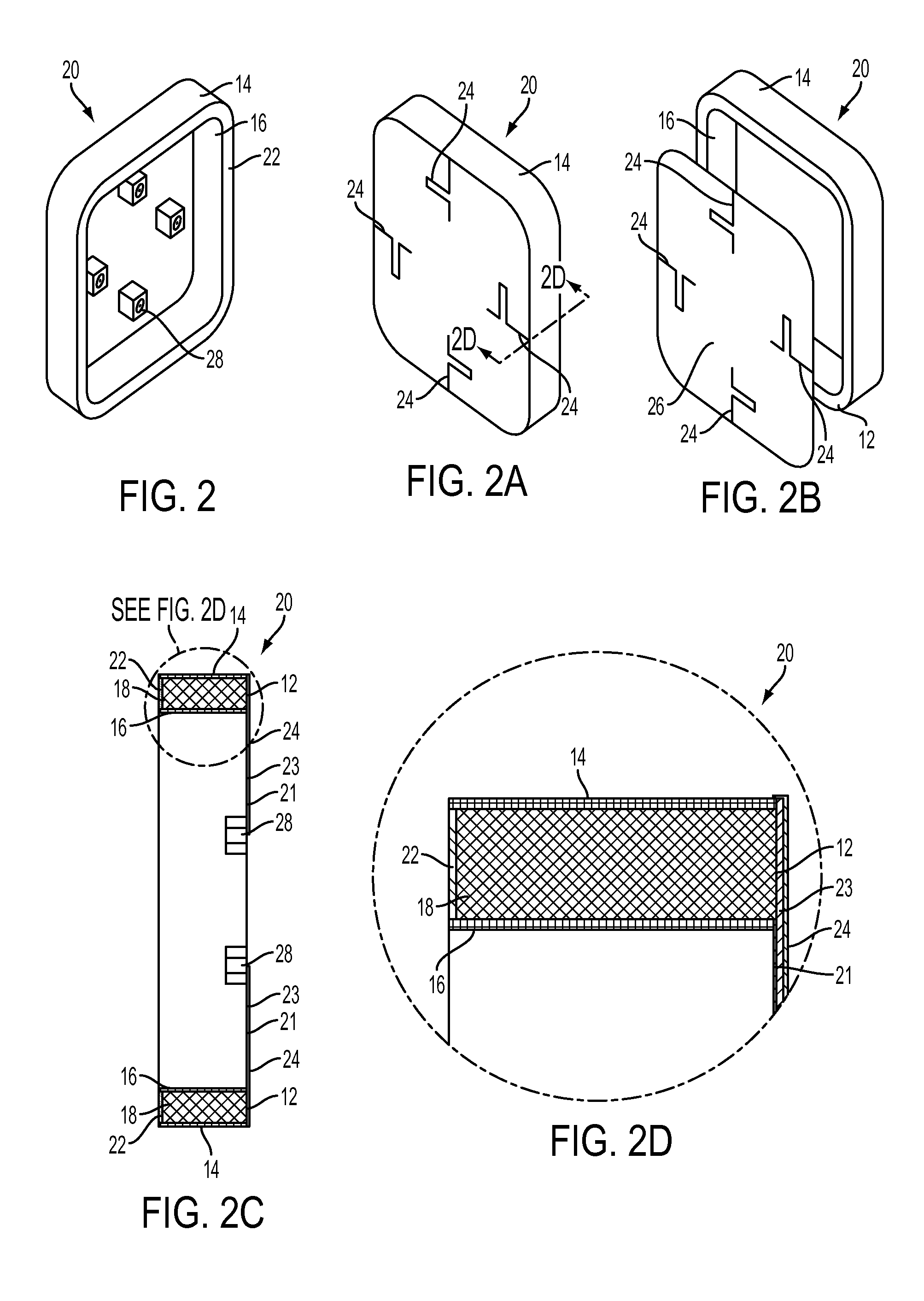Waveguide antenna assembly and system for electronic devices
a technology of electronic devices and antenna assemblies, applied in the direction of antennas, slot antennas, basic electric elements, etc., can solve the problems of coupling and detuning antenna impedance/resonance, gain and bandwidth, and limited wireless electronic device functionality,
- Summary
- Abstract
- Description
- Claims
- Application Information
AI Technical Summary
Benefits of technology
Problems solved by technology
Method used
Image
Examples
Embodiment Construction
[0034]Referring to the drawings, preferred embodiments and operational details of the present waveguide antenna assembly and system are shown and described in detail. In order to more particularly point out and clearly define the presently claimed invention, particularly spatial orientation and electromagnetic correspondence of components of the waveguide assembly, this paragraph defines terms used herein to describe and claim the present invention. To that end, dimensional arrangements are defined along Cartesian longitudinal and transverse axes. Accordingly, as referred to herein, and well known in the relevant art, a longitudinal direction is parallel to the Cartesian Z axis and the transverse direction parallel to the Cartesian X-Y axis. As illustrated, the X-axis is disposed in a horizontal transverse direction and the Y-axis is disposed in a vertical transverse direction. The term “collateral” as used herein defines spatial orientation electrically conductive layers, claimed a...
PUM
 Login to View More
Login to View More Abstract
Description
Claims
Application Information
 Login to View More
Login to View More - R&D
- Intellectual Property
- Life Sciences
- Materials
- Tech Scout
- Unparalleled Data Quality
- Higher Quality Content
- 60% Fewer Hallucinations
Browse by: Latest US Patents, China's latest patents, Technical Efficacy Thesaurus, Application Domain, Technology Topic, Popular Technical Reports.
© 2025 PatSnap. All rights reserved.Legal|Privacy policy|Modern Slavery Act Transparency Statement|Sitemap|About US| Contact US: help@patsnap.com



